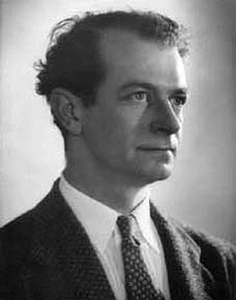Linus Pauling
- Birthplace
- Portland, OR, USA
- Death date
- 1994/08/19
- Associated organizations
- California Institute of Technology, Linus Pauling Institute of Science and Medicine
- Fields of study
- Bioengineering, Radiation
- Awards
- Nobel Prize in Chemistry, Nobel Peace Prize
Biography
Linus Pauling was born in Portland, Oregon, where his parents encouraged his scientific interests from the beginning. When Linus's father died, his mother found it difficult to support the large family. Linus was an able student and won scholarships to Oregon State University at Corvallis, but he had to work long hours as a laborer to support himself while he earned his Bachelor of Science degree. He went on to earn a Ph.D. in chemistry at the California Institute of Technology, the institution where he taught and carried out his research for the next thirty-three years.
The young scientist first made his mark in the world of chemistry with his use of X-rays to examine the molecular structure of crystals. This work led him to a more thorough investigation of the nature of the chemical bond. Pauling revolutionized chemistry in the 1920s with his application of quantum physics to the study of chemistry. He used the new theory of wave mechanics to explain molecular structures which had baffled chemists for years. Pauling's resonance theory proposed that some molecules "resonate" between different structures, rather than holding a single fixed structure. This insight made possible the creation of many of the drugs, dyes, plastics and synthetic fibers we take for granted today. Pauling publicized his findings in a series of papers culminating in an essential work of modern chemistry: The Nature of the Chemical Bond and the Structure of Molecules and Crystals.
Dr. Pauling next turned his attention to the study of organic substances, particularly proteins. By 1942, Pauling and his colleagues had succeeded in producing synthetic antibodies, a major breakthrough. In 1945 Pauling was co-chairman of a project which developed a substitute for blood plasma. In 1949, he performed a groundbreaking study of sickle cell anemia, a disease which disproportionately affects men and women of African descent. In 1951, Pauling and Robert B. Corey described the atomic structure of proteins for the first time. This work had enormous implications for the struggle against disease.
The detonation of the first atomic weapons in 1945 posed an ethical dilemma for Pauling. The more he studied the effects of radiation, the more he became convinced that a nuclear war, or even the continued atmospheric testing of these weapons, could do irreparable damage to the environment and the human population. Because the government was attempting to conceal the dangers of nuclear testing from the public, Pauling believed it was his duty to speak out, but in the first years of the cold war, many Americans considered such dissent treasonous. Pauling could not remain silent. In books, interviews and press conferences, he educated the public about the hazards of radiation and campaigned for peace, disarmament and the end of nuclear testing. These activities cost him friends, funding for his research, and the job he had held at Cal Tech for thirty-three years.
The State Department revoked Pauling's passport, but when he won the Nobel Prize for Chemistry in 1954 and was unable to leave the U.S. to accept it, the pressure of world opinion forced the Department to relent. Pauling continued his peace activism, and in 1957 drafted a petition calling for an end to the atmospheric testing of nuclear weapons. By the time Pauling delivered his petition to the UN, he had collected the signatures of 11,021 scientists from all over the world. This campaign led to a Nobel Peace Prize for Pauling in 1962, and to the first Nuclear Test Ban Treaty.
Linus Pauling remained active in anti-war movements, but he won even greater fame for his studies of the role of nutrition in fighting disease. His 1970 book, Vitamin C and the Common Cold, recommended megadoses of vitamin C to ward off colds and lessen their symptoms. Millions of people now follow this advice. Pauling's theory of "orthomolecular" substances and his views concerning the potential role of vitamin C in fighting cancer have not won wide acceptance in the medical community, but many researchers have followed where he led in studying the role of vitamins and other nutrients in preserving health and fighting disease.
In 1973, Dr. Pauling founded the Linus Pauling Institute of Science and Medicine. From this base, he continued his researches and worked to educate the public about the dangers of smoking and the benefits of vitamins. He received numerous honors, including the Presidential Medal for Merit and the National Medal of Science. He published books for the general reader on a variety of subjects, from one of his first, No More War, to one of his last, How to Live Longer and Feel Better.
Linus Pauling died on August 19th, 1994, at the age of 93.
Larson Collection Interview
Part 1
Part 2
